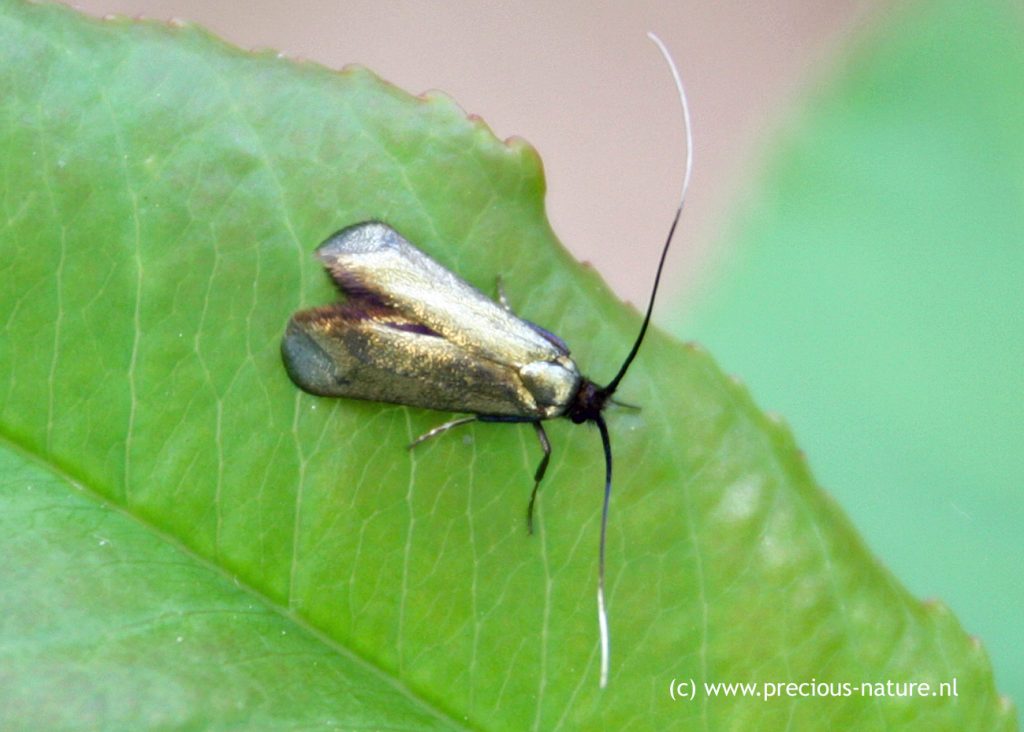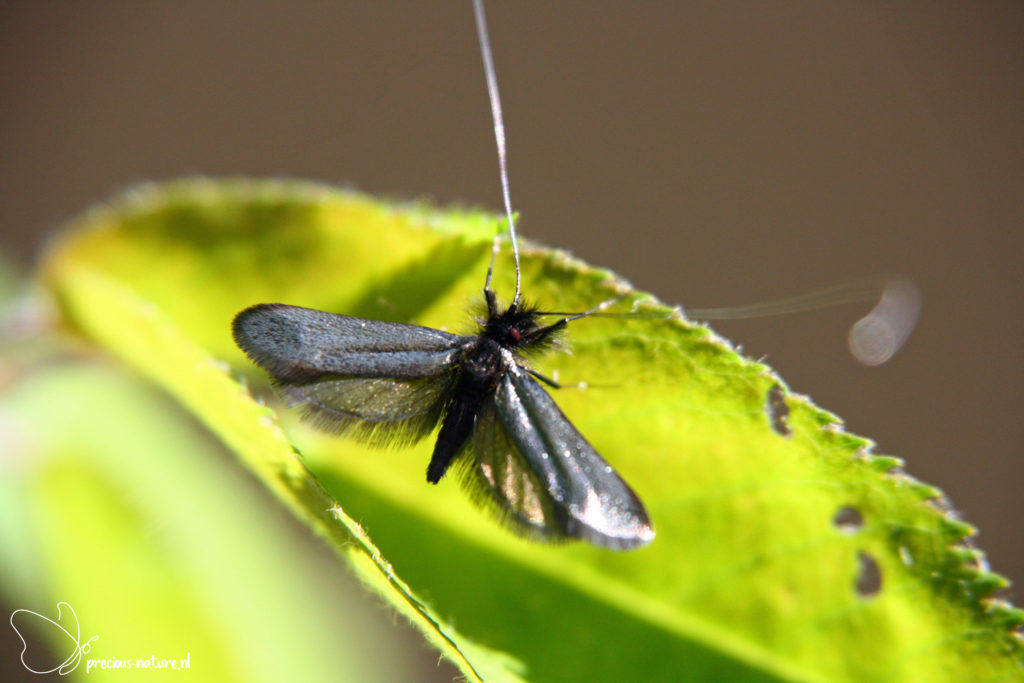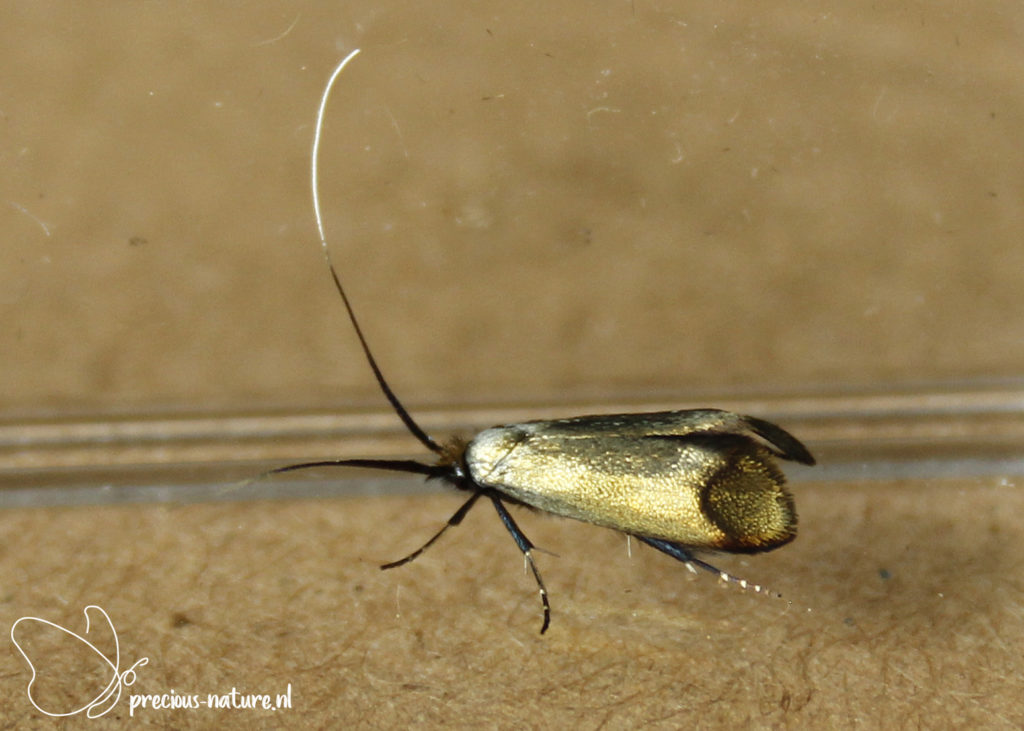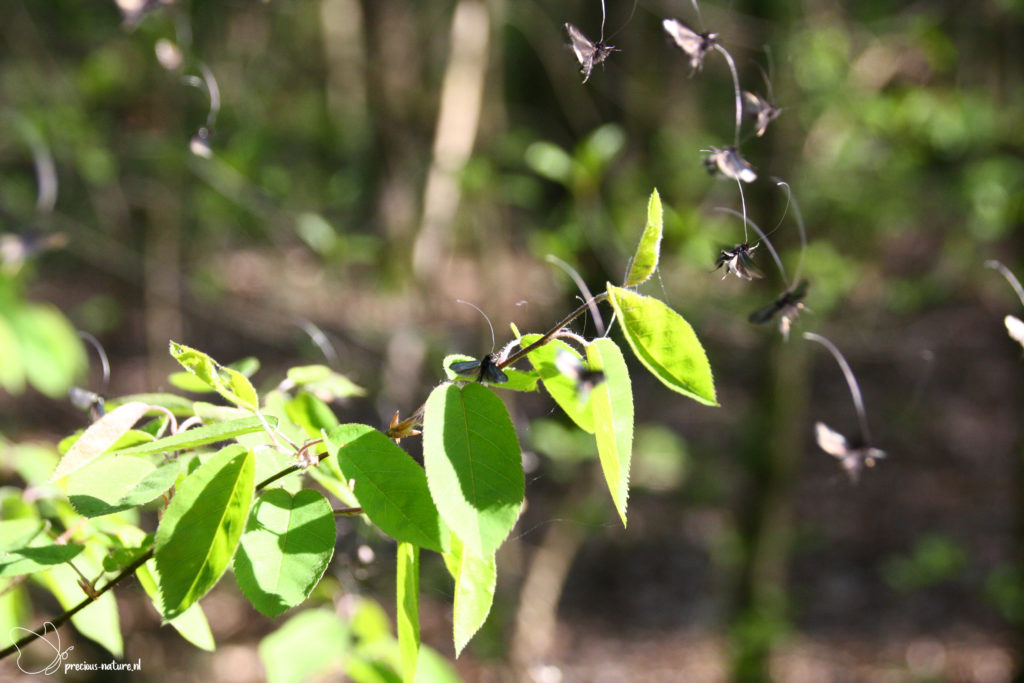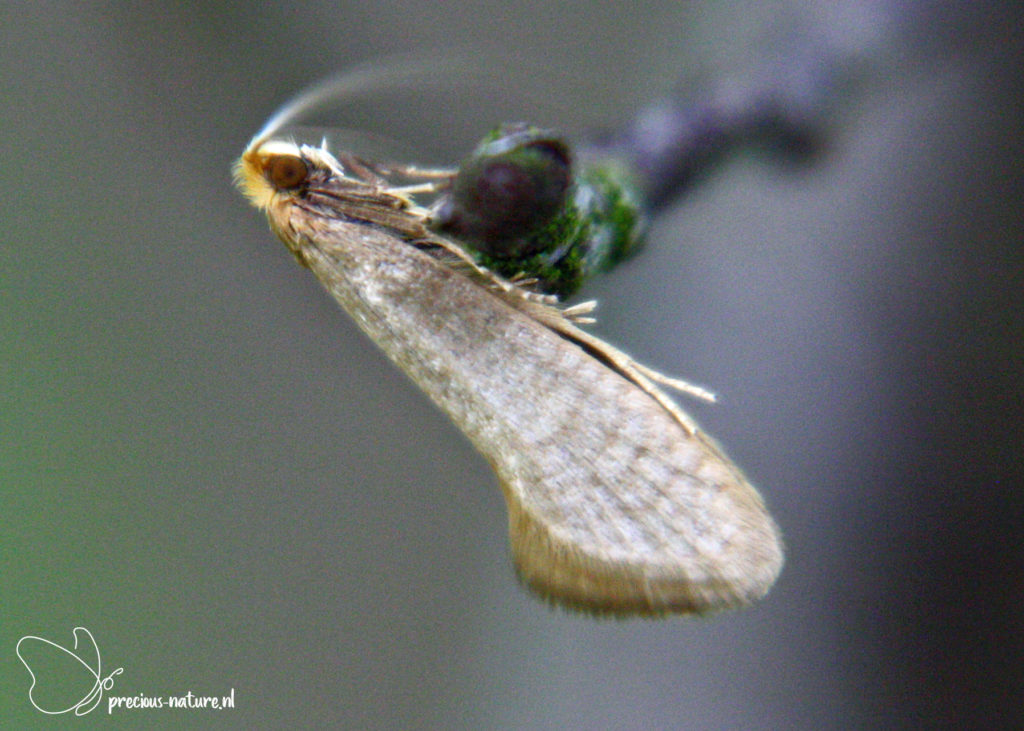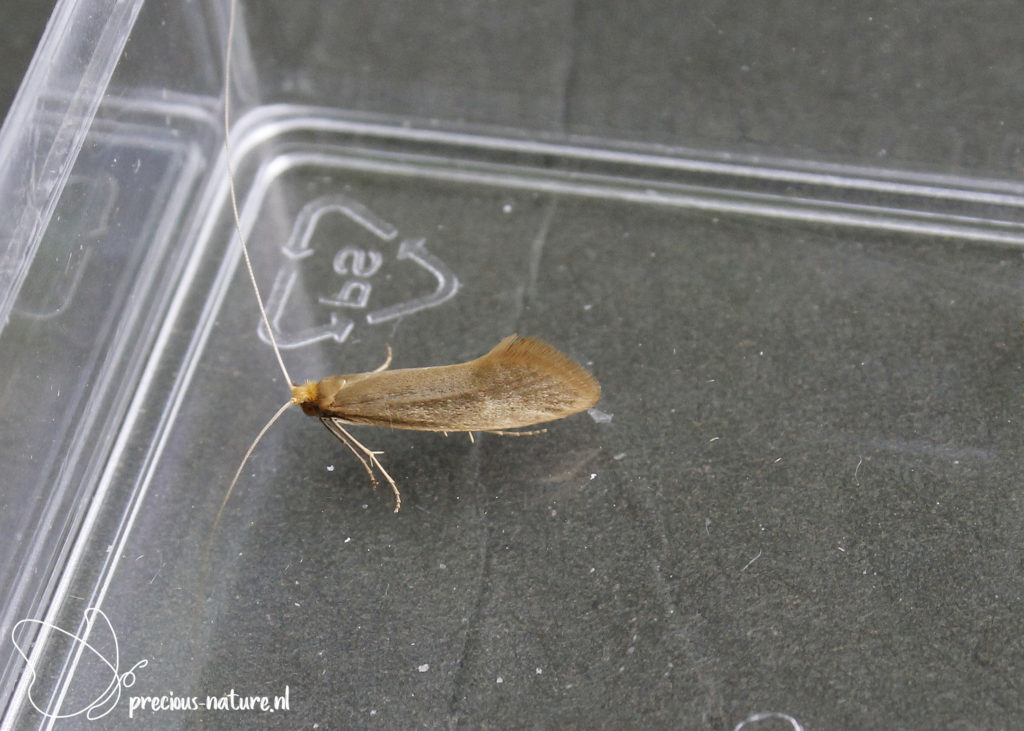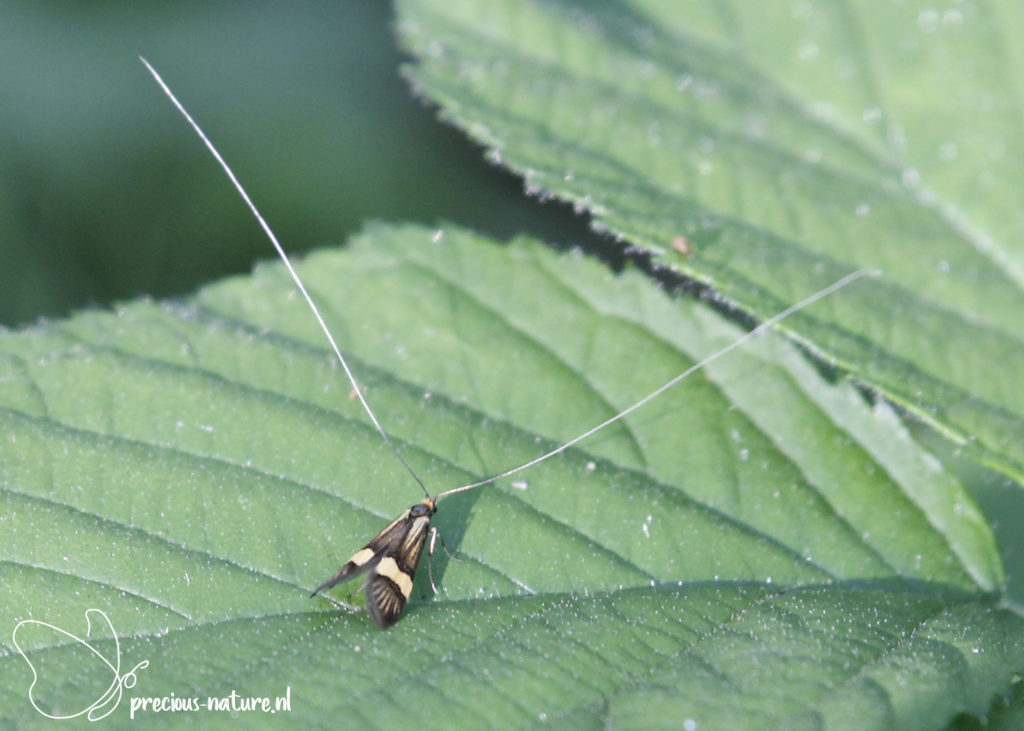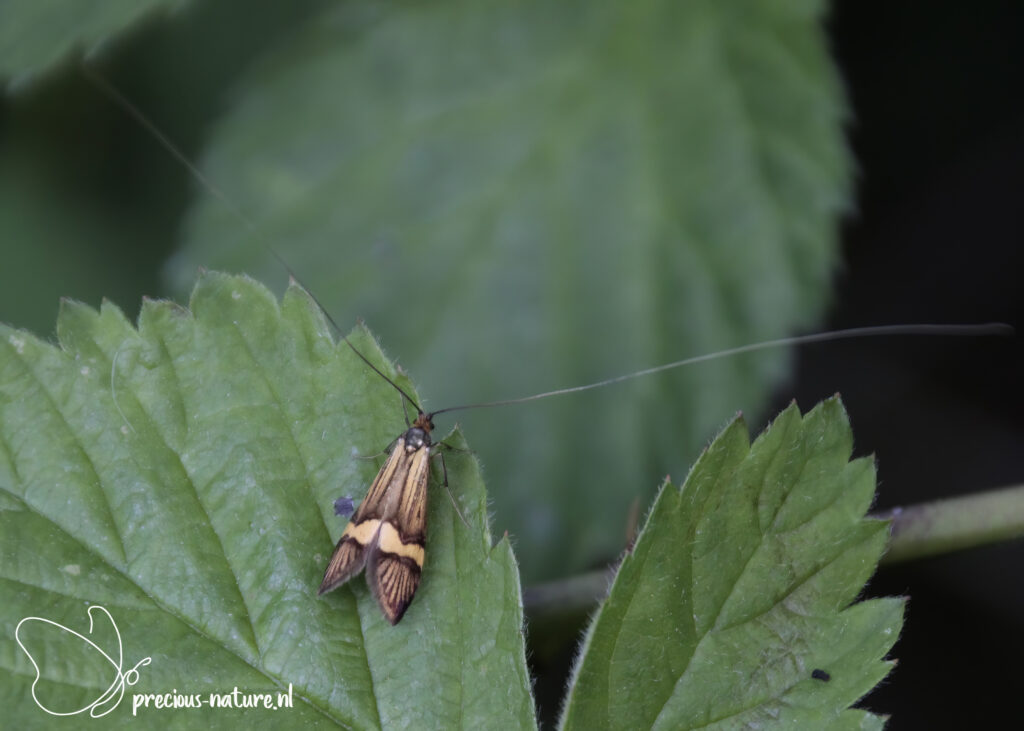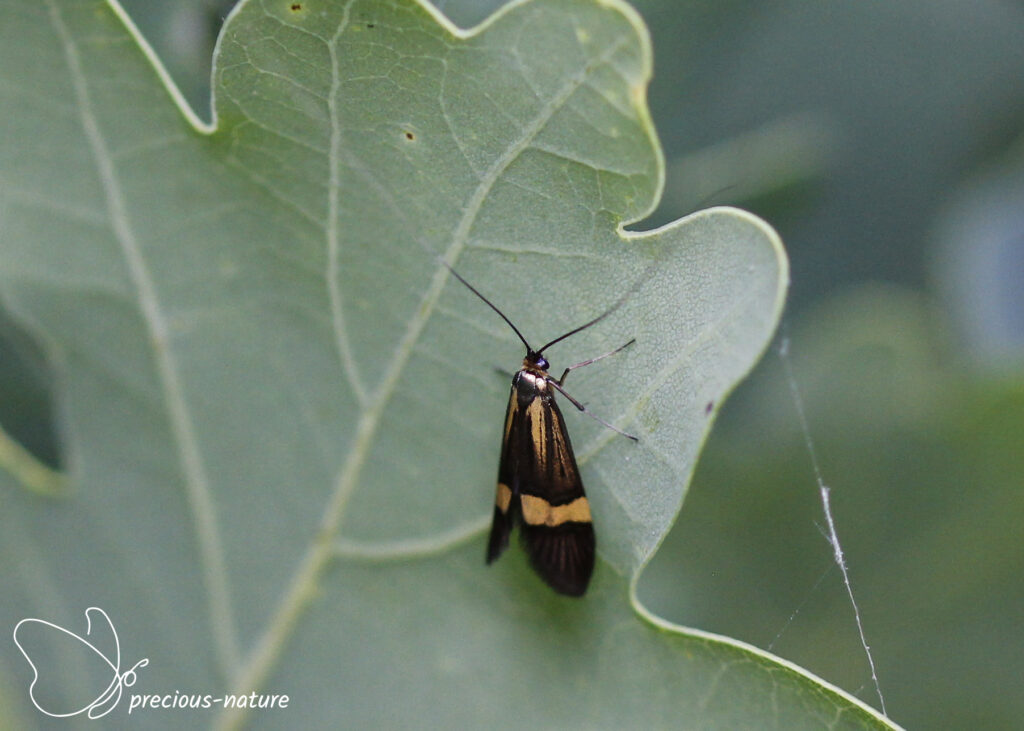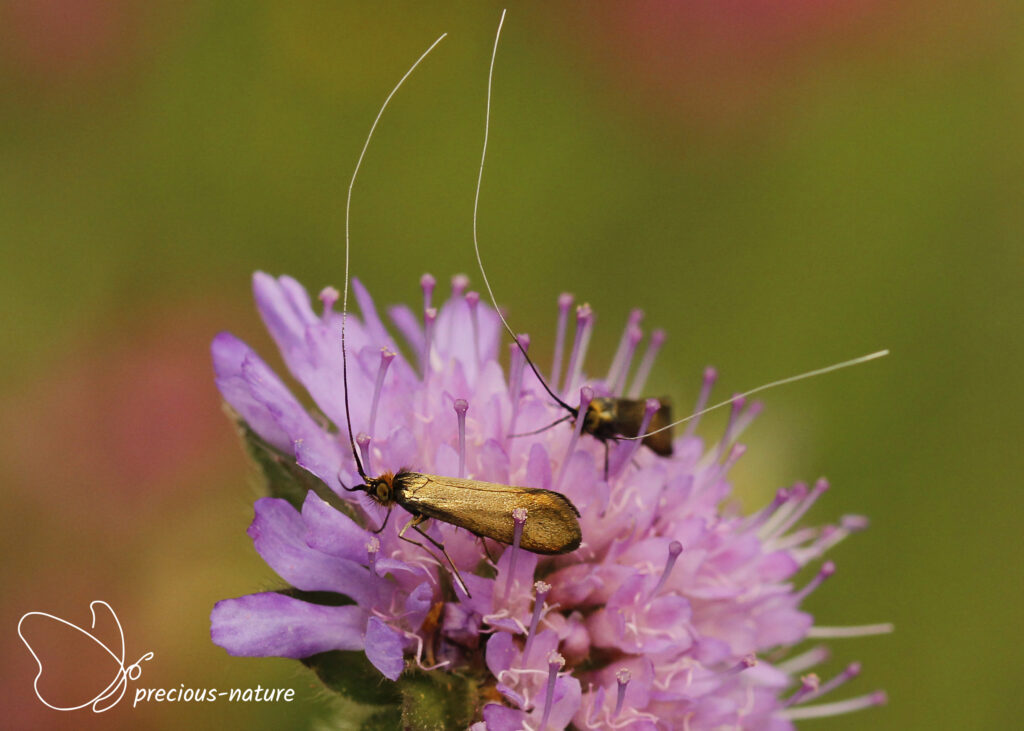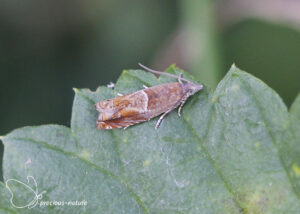Fairy Moths (Adelidae) are known for their very long antennae. These are often 2.5 to 3 times the length of their forewings. They are often longer in males than in females. The species that fly during the day are brightly coloured, while the nocturnal butterflies are dull colored.
Genus: Adela
Green Long-horn – 2018 (NL)
(NCBI-index: 233158)
In the Green Long-horn (Adela reaumurella), the male, like the other fairy moths, has much longer antennae than the female. In the male, the antenna is about three times the length of the forewing, and in the female, one and a half times. The male also has relatively long, dark black hair on the head and thorax. The female has much shorter hair and two stripes of orange tufts between the eyes. The forewing is metallic, dark green, or blue-green, sometimes with a slight orange tint. The flying period is in one generation from April to June, and the wingspan is 14-18 mm. Host plant: Beech, Oak. Dutch name: Smaragdlangsprietmot. Frisian name: –
Flying period:

Genus: Nematopogon
Large Long-horn – 2019 (NL)
(NCBI-index: 753375)
A relatively colourless fairy moth is the Large Long-horn (Nematopogon swammerdella). The forewing is pale greyish-yellow with an indistinct reticulate pattern. The base of the costa is sometimes a bit darker. This fairy moth is the largest of the simply colored fairy moths. The antenna is about 2 to 2.5 times the length of the forewing. The flying period spans from April to June in one generation, and the wingspan ranges from 18 to 21 mm. Host plant: Dead leaves on the ground. Dutch name: Bleke langsprietmot. Frisian name: –
Flying period:

Genus: Nemophora
Yellow-barred Long-horn – 2017 (NL)
(NCBI-index: 233164)
The Yellow-barred Long-horn (Nemophora degeerella) has a striking yellow cross-band on the top of the wing that also has brown to black stripes on a light yellow ground colour. The antennas are remarkably long, especially in males. In sunshine, you often see the males dancing in groups in the air and occasionally perching on the low vegetation in the forest. The flying period is from May to July, and the wingspan is 16-23 mm. Host plant: Dead leaf material. Dutch name: Geelbandlangsprietmot. Frisian name: –
Flying period:

Genus: Nemophora
Brassy Longhorn – 2023 (DE)
(NCBI-index: 1.594367)
In addition to the colour and markings of the forewing, identification of the Brassy Longhorn (Nemophora metallica) was also based on the host plant. The forewing is elongated and is uniformly golden with a green sheen. The antennae are 3x the length of the forewing in the male and 1.5x in the female. During the day, this micromoth flies in sunny weather and rests on the host plant. The flight period spans one generation, from June to early August, and the wingspan ranges from 16 to 20 mm. Host plant: Field Scabious. Dutch name: Gouden langsprietmot. Frisian name: –
Flying period:


